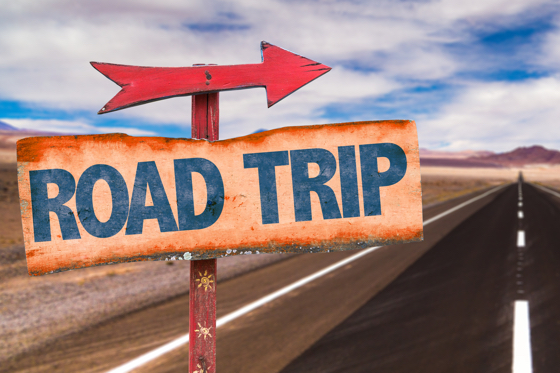According to the U.S. Travel Association’s Travel Recovery Data Report, 60% of U.S. adults expressed confidence the country will ‘return to normal’ by summer. Eighty seven percent plan to travel within six months.
A survey by Longwoods International found 88% of American travelers planning road trips within the next six months. An Erie Insurance survey found much the same with more than 51% of respondents planning at least one road trip this year. Another 30% will venture out as COVID declines. A majority of Erie’s respondents plan to travel at least 500 miles from home.
As Americans prepare for a very different vacation season, the travel and leisure industry is also coping with changed norms. Enhanced sanitation protocols and more forgiving cancellation policies will remain. Contactless and mobile check-ins and more smart room technologies may become the new standard for hotels. Digital solutions like smartphone-controlled keyless room access, QR coding for hotel services, and in-room voice control of thermostats, lighting, televisions and bathroom water fixtures offer a cool factor and, importantly, help minimize points of contact.
Contributed by By Rod Hughes, principal, Kimball Hughes Public Relations, Blue Bell, Pennsylvania
Some of these tech-driven enhancements may have news value to travel, business and local media, and hotels should leverage them.
Hoteliers can court the press on the above tech features, as well as current industry and economic trends. Based on your hotel leadership’s experience, create a bulleted list of hotel and travel trends on which your executives can speak in detail. These trends may include personalization of the guest journey, new hotel technologies, tips for road trippers in your city or town, the rising work-from-hotel trend, insights on guest priorities (survey data helps) in the age of COVID and so forth. Take your topic list, with contact information for the executive(s), and send them to local and regional business and travel reporters and editors, local television stations and a selection of travel, leisure and tourism outlets and blogs your prospective guests might read.
Reach out to business trade media that cover the industries or companies whose employees you want to target. Talk to their editors about the trend of workers who, untethered to cubicles by COVID, are exploring to where they might want to relocate. Let them know what your hotel is doing to attract these explorers to your region while also accommodating their business needs.
Savvier hoteliers targeting millennials and Gen Z guests should create a branded YouTube channel that acts as a news source about your region, travel trends and general travel advice. The content should be a 70/30 split, with only 30% of the content being about your hotel. For more densely populated or popular travel destinations, the content should be split 80/20.

For other hotel and lodging destinations, reaching U.S. travelers in 2021 will be, in part, about meeting them where they are: on the road.
Road trippers
If, as Erie Insurance’s survey noted, road trippers are planning long road trips, helping to ease the impact on the family car, as well as the family, can be helpful.
Partnering with rental car operators for car or room discounts and offering free oil changes or car washes to road tripping guests can be a good start. Moreover, there’s been a huge spike in RV rentals and purchases due to the pandemic. Ipsos recently reported RV ownership hit a record high in 2021 with 11.2 million households owning RVs. And while road tripping in an RV with the family seems attractive, by day three it can lose its luster.
A package or discount program to attract RV travelers to take a break from the cramped confines of the family RV can attract road trippers. Consider including day care services or discounts. Arranging a quiet dinner in the hotel restaurant (or nearby) for mom and dad or room service for families of registered guests might be a welcome perk. Spa treatments, couples’ massages and theme park tickets or discounts should be included where possible.
Friends of friends
Reciprocal business agreements help, too. Hoteliers can reach out to local Chambers of Commerce, business associations and, in some cases, visitors bureaus or travel and tourism organizations. Cross-pollinate your social media accounts with tourism related businesses (e.g., white water rafting and zip line operators, local restaurants, gift shops, museums, etc.) to promote the region.
In the Caribbean, Bonaire is running an advertising and social media campaign that cross-promotes and discounts more than 50 area businesses on the island. It’s designed to lure reluctant travelers back to the island, and it’s working. Short YouTube videos detailing your continued safety protocols and room tours are also helpful in overcoming concerns for some reluctant travelers.
Big hotel brands have adjusted their reward programs to accommodate discounts, car rentals and airline savings. As 2021 travelers focus on savings and safety, this is attractive.
The road ahead
The American Hotel & Lodging Association State of the Industry report states the hotel industry may not fully return to its pre-COVID strength until 2024. Until then, hotel operators need to get creative. Focusing on what travelers want: affordability, peace of mind, continued levels of superior sanitation and accommodation of their sensibilities will offer hoteliers opportunities to distinguish themselves and attract re-emerging travelers.
